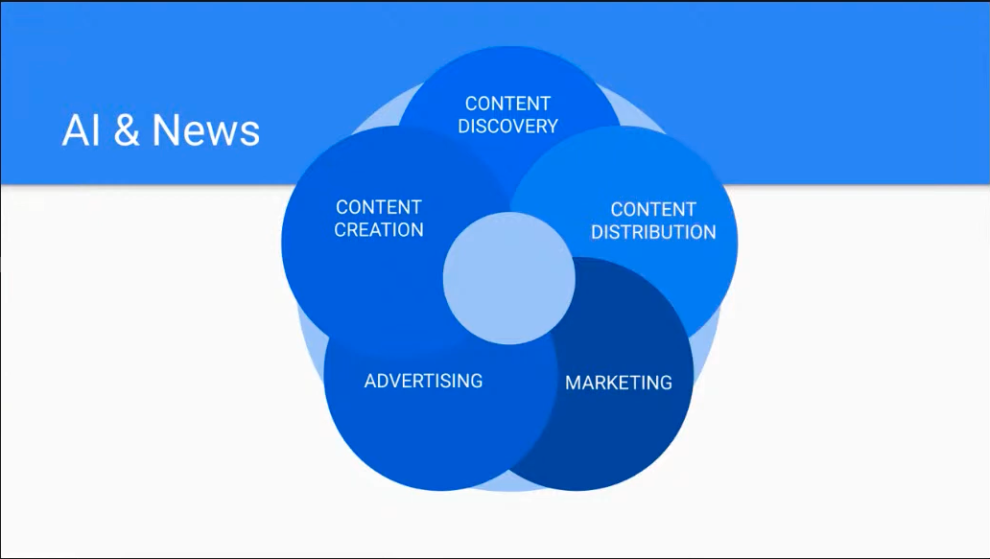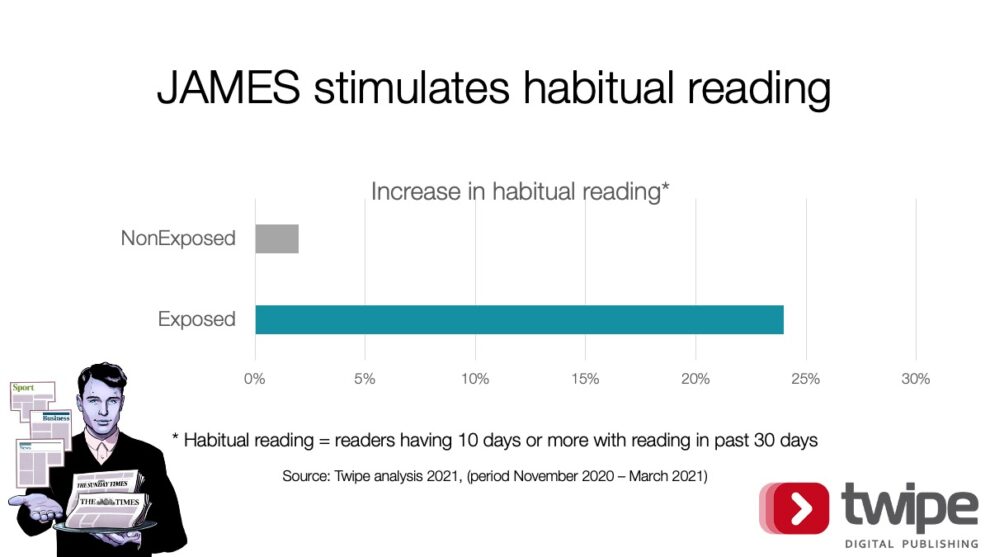What we learnt at the Journalism AI Festival
AI is no longer a stranger to newspaper publishers. The second edition of the JournalismAI festival last week highlighted interesting developments of the use of AI across publishing. From automating newsroom tasks to increasing subscription bases, AI technologies are starting to prove their worth.
The Business Case of AI
Anita Zielina of Newmark Journalism School identified 5 areas in which AI can create opportunities for publishers. These were: content creation, content discovery, content distribution, marketing and advertising.

Using AI in these fields can lead to 2 important business results:
- Increased revenue: Better products with better targeting that drive higher subscriber satisfaction which results in higher willingness to pay and reduced churn.
- Improved efficiency: AI can help to lower resource costs on redundant and repetitive work flows and create better efficiency within the newsroom.
Anita did add that investment in AI is not like other forms of investment. Newsrooms must have patience. Investment in AI is something which pays off for newsrooms in the long-term.
If you try to fit AI into your usual quarterly returns numbers, it’s never going to work out.
Anita Zielina, Director of News Innovation and Leadership, Newmark Journalism School
From analysis of 22,000 readers exposed to AI algorithms on our JAMES platform, we see that AI shows a clear impact in habit formation and churn reduction. Personalised newsletters based on JAMES Hybrid algorithms drove a 22% increase in habitual reading for exposed cohorts vs non exposed cohorts.

A correlation between increase in habitual readers and churn reduction was observed during the joint JAMES research project at The Times of London. We observed 49% lower churn among cohorts exposed to the JAMES Personalised Newsletters. This can translate in significant revenues for publishers.
Further experiments are running at national and regional publishers in Denmark and Finland. These are also starting to show similar initial results.
Automation can create more time for journalism
Automation is becoming less of a gros mot and more of a strategic tool. Cynthia DuBose uncovered how McClatchy have leveraged AI for automating tasks in their newsrooms. To stay true to their “deeply rooted commitment to the role of local journalism”, McClatchy adopted AI to bring value to local communities.
They worked with Lede AI to build a tool for automated high school sports fixture reporting. With the sheer amount of high school sporting events going on, it is time consuming for reporters to cover them all. Lede AI automatically generates reports on the results from high school fixtures. These reports are then sent rapidly via email for fans. The tool also provides as well data visualisations of statistics from these fixtures.

Journalists can therefore spend time to write more detailed stories about each of these fixtures. The utility of this automation and the extra depth that it was able to add to their article helped to bring journalists on board to understand that AI was a supplement for them, not a replacement. Since introducing their AI tools, McClatchy have noticed 2.5% more engagement.
With a strong commitment to transparency, McClatchy added a disclaimer at the end of each bot-made email. They also made the bots contactable. This has been extremely useful as all feedback has helped the bots to grow and develop.
Collaboration is key for AI success in small newsrooms
Smaller newsrooms traditionally lack both the financial and personnel resources of larger publishers. Working with external partners and learning from successful case studies therefore offers great opportunities. At Twipe, we have collaborated on AI with newsrooms through our JAMES Launch Partner Programme. The programme will soon be open for its’ 2022 edition. Contact me to register your early interest!
The need for the use of AI in small newsrooms was explored in a panel discussion with Lee Mwiti of Africa Check, Rebecca Appel from the Thomson Reuters Foundation, Sabin Muzaffar of AnankeMag and Independent Journalist Samya Ayish.
A key sentiment that arose was that identifying the need and use for AI is key for smaller newsrooms. Doing this should always be done with both the audience and the newsroom in mind. This process is vital to ensure that innovation and AI has a purpose and that it is not embraced purely to be seen to stay with the times. It is also essential to get the newsroom onboard at the start of the process.
Sabin Muzaffar from Anenkemag highlighted a great way to do this. Within their newsroom, they launched workshops for journalists to feel comfortable with AI. Doing this has also helped to reduce the stigma around AI internally and helped them to feel ownership of the projects.
By starting small and discussing AI openly, AI’s place in smaller newsrooms can become normalised.
Future of AI in Journalism
Say it quietly, but the future of AI seems to be more and more promising. We have seen great examples of newsrooms across the world adopting AI in many formats, and its utility has helped to boost effectiveness of publishers. As Jeremy Gilbert of the Knight Lab put it:
“What we define today as artificial intelligence, tomorrow feels like automation because it seems normal or we understand it.”
Jeremy Gilbert, Knight Chair for Digital Media Strategy, Northwestern University Medill School
Jeremy particularly identified an opportunity for AI to help journalism to cover a living narrative. This not only will help people to keep up to date with the news, but also it will help shape news that people want to read. Therefore for Jeremy, newsrooms need to ask themselves how and why people consume their news, then identify areas in which AI can make this better.
Looking ahead, the future feels bright for AI. And, importantly, journalists needn’t worry. A recurring message was that their jobs will be safe. Abhishek Prasad from HT Media told the festival:
“The worst thing you can think of is an AI system writing articles”.
Abhishek Prasad, Head of Insights/AI & Innovation, HT Media
Instead, he believes that AI technology is a friend, not an enemy. Abishek reiterated that the future of AI is designed to simplify our lives and helps us to do our jobs.
Agnes Stenbom from Nordic publisher Schibsted identified AI as not just being a narrow focus around distribution within journalism. Instead, we must see AI as an essential part of the future foundations of publishers.
“Newsrooms need to prepare their people not just their tech stack for this change towards infrastructure”.
Agnes Stenbom, Responsible Data & AI Specialist, Schibsted
For publishers to seize the future opportunities presented by AI, early investment in building foundations is key.
Other Blog Posts

Stay on top of the game
Join our community of industry leaders. Get insights, best practices, case studies, and access to our events.
"(Required)" indicates required fields

